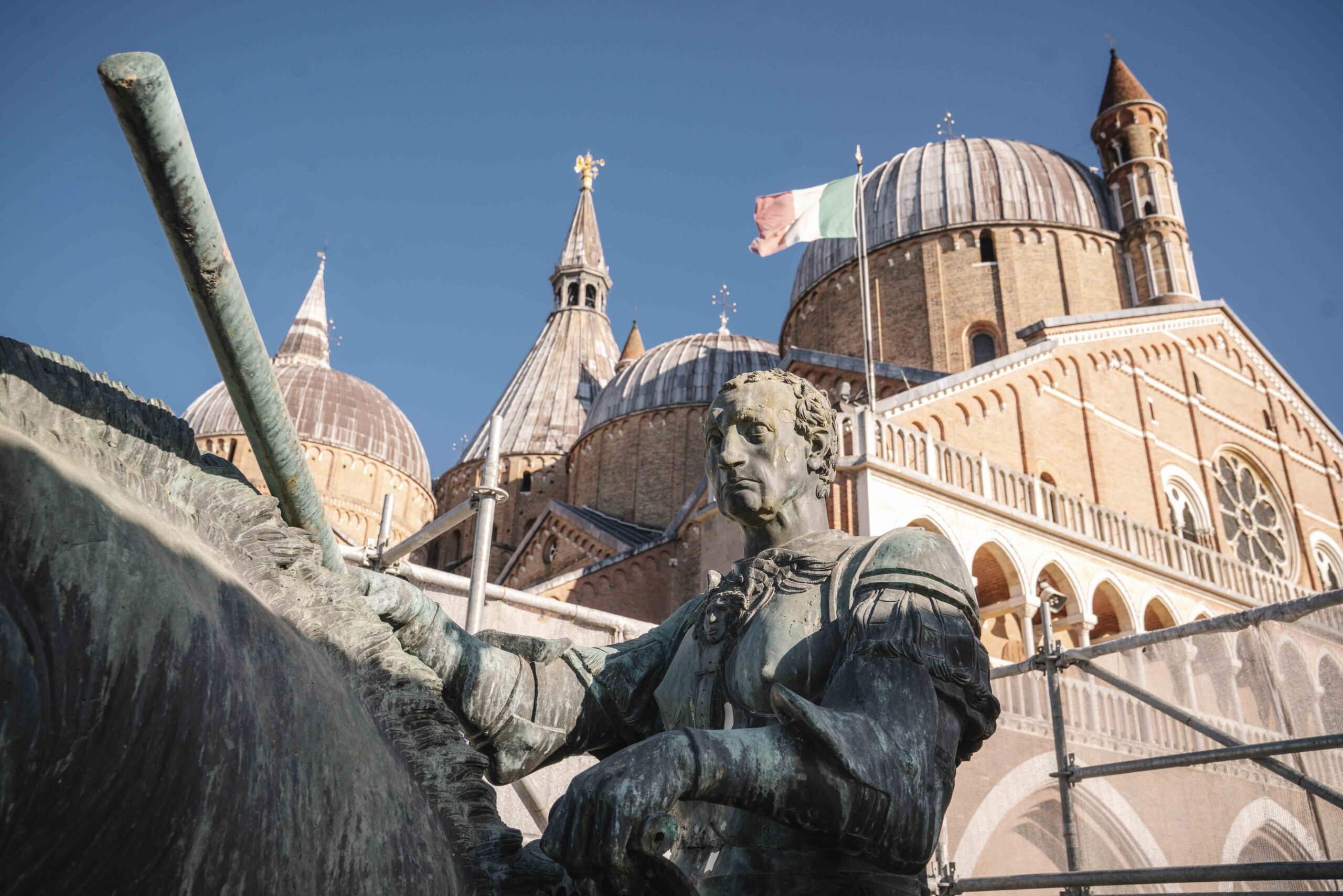
"Donatello's Gattamelata, one of the great masterpieces of Renaissance sculpture, has been carefully removed from its pedestal in front of the Basilica of Saint Anthony in Padua for a major conservation project. The forecourt of the Basilica of Saint Anthony in Padua became the stage for the event, which took place earlier this month. Under the eyes of engineers, restorers, and heritage officials, Donatello's bronze equestrian statue of Erasmo da Narni, better known as the Gattamelata, was taken down for the first time in 85 years."
"On October 8, engineers and restorers began the painstaking process of lowering the Rider. The 450-kilogram bronze figure was detached from its stone base on the Basilica's forecourt and, after a brief but tense "flight," was placed onto a special support structure that will hold it safely during upcoming studies. Later that morning, the Gattamelata was transported about 80 metres to the site of a former museum, where it will remain for several months."
"The next day, October 9, it was the Horse's turn. Weighing about 1.6 tonnes, the imposing bronze animal was detached from its base and reunited with its Rider later that evening at the museum. According to the Scientific Director, Architect Ugo Soragni, the Horse's legs had been anchored with iron pins probably installed during the Second World War. "It was necessary to cut them to free the statue from the base, which, despite its apparen"
Donatello's Gattamelata, a fifteenth-century bronze equestrian statue of condottiero Erasmo da Narni, has been removed from its pedestal at the Basilica of Saint Anthony in Padua for a major conservation campaign. The Rider, a 450-kilogram bronze, was detached on October 8, placed on a specialized support and moved about 80 metres to a former museum for study. On October 9 the Horse, weighing about 1.6 tonnes, was detached and reunited with the Rider at the museum. Restorers discovered iron pins anchoring the Horse’s legs, likely installed during the Second World War, which had to be cut to free the statue. The work begins a new preservation phase for an early Renaissance revival of classical equestrian bronze.
Read at Medievalists.net
Unable to calculate read time
Collection
[
|
...
]